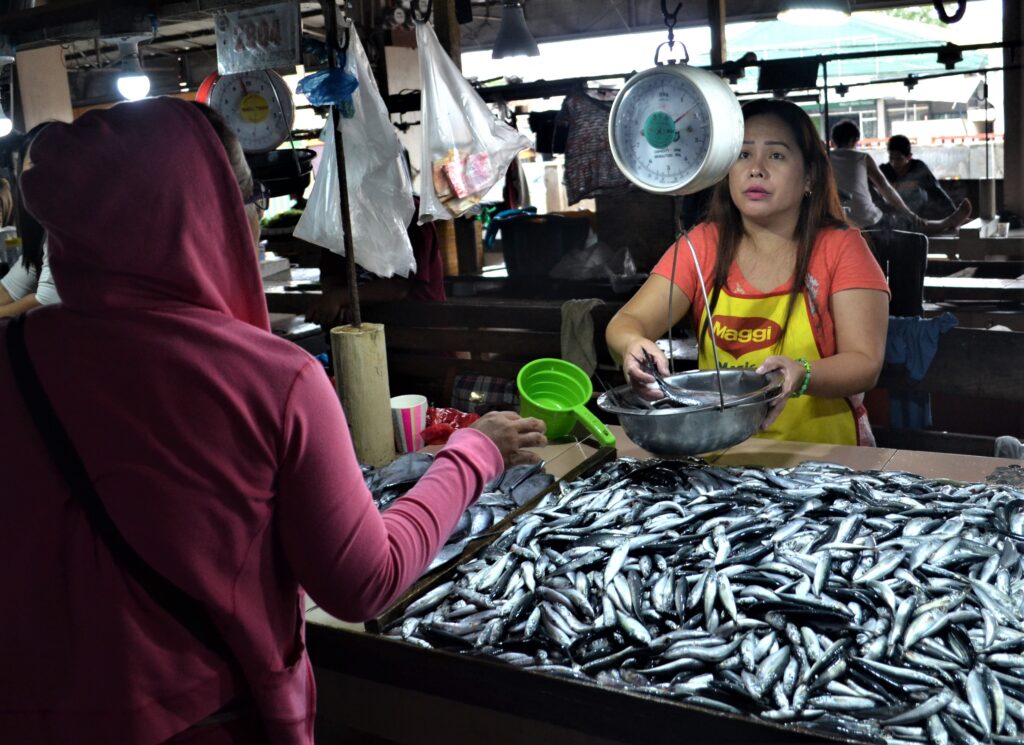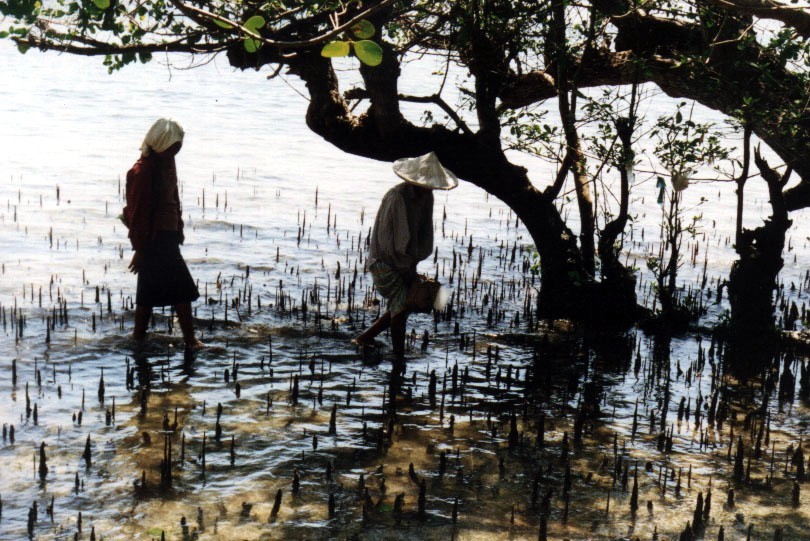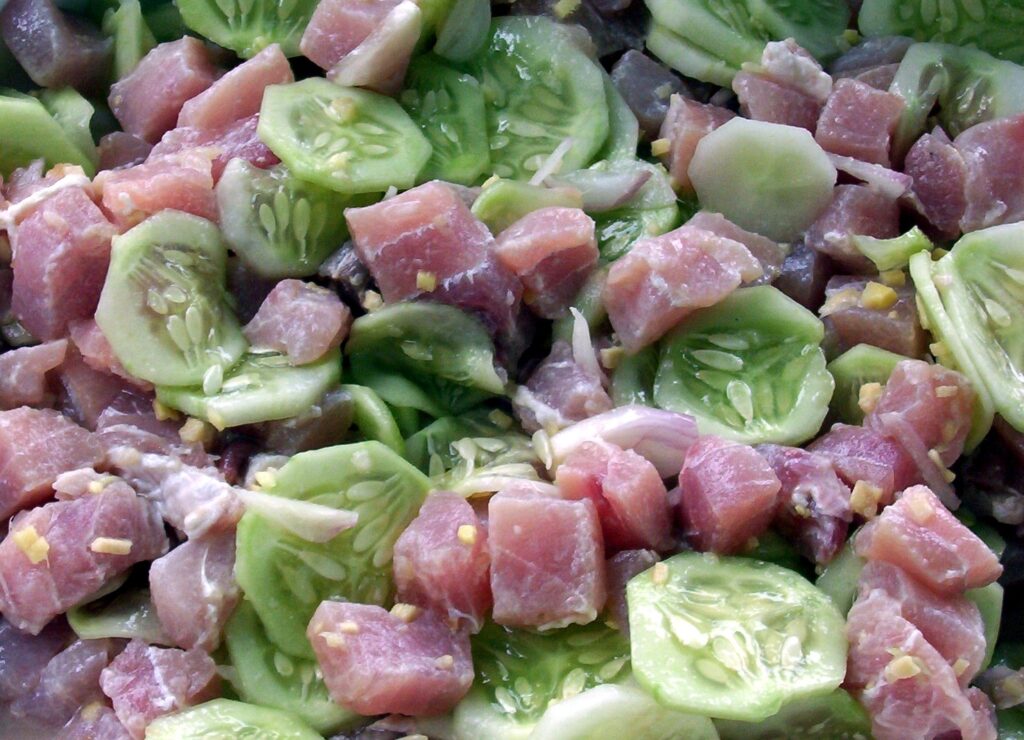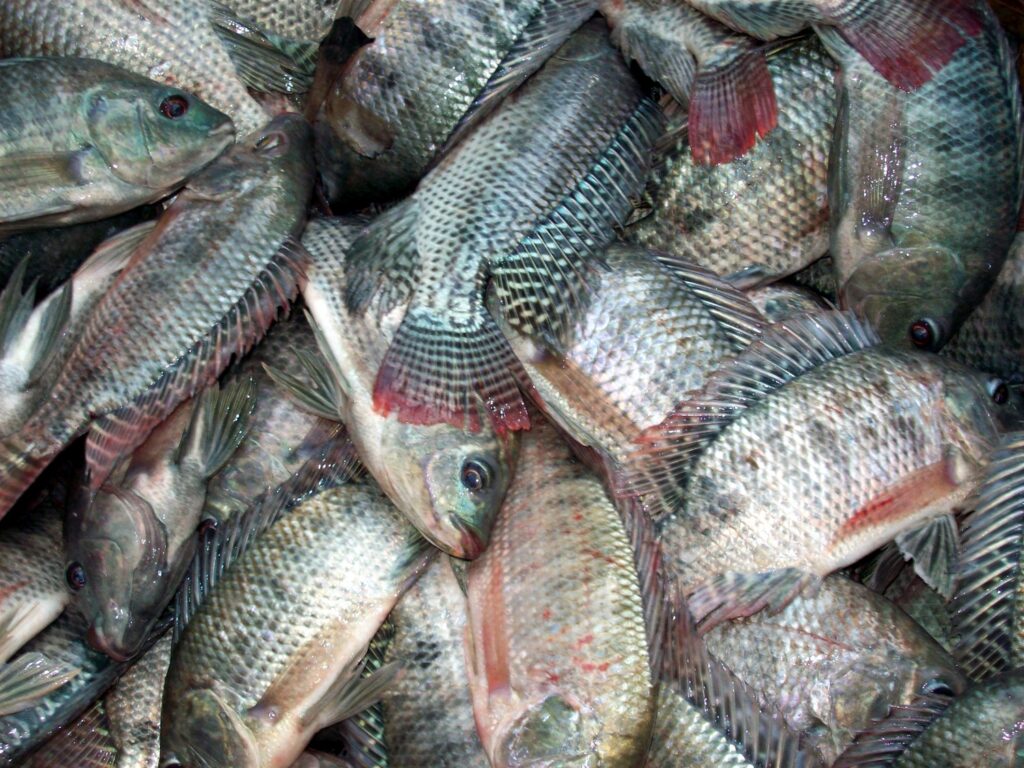Text and Photos by Henrylito D. Tacio
When coronavirus disease 2019 (COVID-19) hit the country in early 2000, health experts urged Filipinos to boost their immune systems to fight the virus by eating fruits and vegetables. Infected individuals were advised to eat meat in order for them to regain their immediate health.
One of the healthy sources of protein is fish. But unfortunately, most Filipinos can no longer afford to buy fish as they become expensive. In the past, people could buy a kilo of “galunggong” (round scad), “matang baka” (big eye scad), and “karabalyas” (yellow stripe scad) at P30.
These days, the price has gone up: from P100 to P150 per kilo. What is even more alarming is that the supply is becoming scarce. This is particularly true in Davao City, which is located in the Davao Gulf area.
Overfishing is cited as one of the primary culprits on why fishery resources in the 308,000-hectare fishing ground are declining. To solve this problem, the Bureau of Fisheries and Aquatic Resources (BFAR) imposed a ban on commercial fishing at the Davao Gulf for three months – from June 1 to August 31.
Those three months are known to be the spawning season of pelagic fishes and tuna in the Davao Gulf, which spans about 30 coastal municipalities in the region – from Malita in Davao Occidental in the south to Boston on the eastern coast.
Under the terms of the closed season, fisherfolk or fishing companies are now allowed to catch pelagic fishes using ring net and bag net. The ban also applies to small-scale to large-scale commercial fishing with vessels from 3.1 gross tons to more than 150 gross tons.
Fish, along with rice, is the staple food of Filipinos. On average, every Filipino consumes about 98.6 grams of fish and fish products, according to the Food and Nutrition Research Institute (FNRI).
The Philippines is located in the heart of the Coral Triangle, the global center of marine diversity. “Being an archipelagic that is made up of 7.107 islands, the Philippines enjoys the vastness of the oceans and seas that surround its peripheral territories,” the Philippine Statistics Authority (PSA) reports. “Suffice to say that the country is truly blessed with its bounty of natural resources thriving in these water bodies.”

Buying fish 
Mangroves
With one of the longest coastlines in the world, much of the Filipino population lives along the coast. In 1998, the fishing industry provided employment to about one million Filipinos or around 3% of the country’s labor force. Today, about two million people are engaged in the fishing industry.
“During the past decades, the people have enjoyed the abundance of the Philippine marine fishery resource,” the PSA states. “Ask the old fisherfolk how they culled their harvests. Many of them would say that fish sized with less than a foot rule will automatically be thrown back to the water. Back then, they even had the luxury to choose the most palatable fish among the wide variety of species thriving in a particular fishing ground.”
Those days are gone.
Ask 63-year-old Ronnie Herrera and his son, Dondon, 18. Bago Aplaya, where they used to fish, was once the haven of fish in Davao City. But in one particular noon recently, the older Estrera already docked his banca (outrigger), but with no catch even as he started out at dawn. “It’s not only now, several times, we went home without fish,” he complained.
His son was fortunate, having one icebox of fish catch. But he said the fish were getting smaller and fewer, and they were forced to fish farther south into the waters of Sta. Cruz in Davao del Sur. “Fishers are already scarce in Bago Aplaya,” Dondon sighed.
Currently, the Philippines is home to more than 111 million people, based on the latest United Nations data. With this increasing number of people, the demand for basic commodities also increased.
“The demand for fish, both for food consumption and other uses, has increased correspondingly,” the PSA notes. “Consequently, many of the households from the coastal villages have made fishing as their source of livelihood.”
The upsurge in the population coupled with the improved fishing technology brought stress to the country’s marine and coastal ecosystem, thereby affecting the fishery resource.
The majority of the fishing grounds in the country are now overfished. Recent reports said that ten out of 13 fishing grounds are under intense fishing pressure. “Overfishing is the main issue, with today’s fishers ranging farther and trying harder to catch more – but there are more fishers and too few fish,” observes Gregg Yan, director for Communications for Ocean Philippines.
The Sogod Bay in Southern Leyte is a case in point. Home to a variety of fishes, it is a major fishing ground for the 11 municipalities that surround it. Mangko or frigate tuna (scientific name: Euthynnus affinis) is its major fishery resource. The seasonal influx of this shallow-water tuna species has provided food and livelihood to the people of Sogod and nearby towns.
“Frigate tuna used to abound in Sogod Bay and was a major source of income in the 70’s until the 90’s,” Dr. Salome Bulayog, an associate professor of the department of economics at the Visayas State University, told EDGE Davao. “But today, fishermen could hardly catch fish. Fishermen have to spend longer to catch a kilogram of fish; some even have to be farther from the shore.”
A World Bank report said that if increased demand is met solely by marine capture fisheries, such increased pressure on the fisheries sector could lead to an eventual collapse of fisheries and the fishing industry.
“All fisheries are showing decline in total catch and per unit effort (total number of fish caught per unit of time) despite increasing effort,” the World Bank report said. “Fish are harvested at a level 30 to 50 percent higher than the natural production capacity.”

Fresh kinilaw 
Farmed tilapia
The BFAR, a line agency of the Department of Agriculture, also attributes the decline in fish catch to the employment of destructive fishing methods like the use of cyanide and dynamite. The practice of cyanide fishing has been rampant among Filipino fishermen for more than 25 years already. On the other hand, about 70,000 fishers – that’s 12% of the total number of captured fishers in the country – are suspected of engaging in blast fishing.
The destruction of the coastal ecosystem has also taken its toll on the country’s marine resources. Mangrove swamps, marshy areas, and coral reefs make up the coastal ecosystem, and most of them are in bad conditions.
In 1918, mangroves covered 450,000 hectares as opposed to 138,000 hectares today. “All over the country, whatever coastal province you visit, you see the same plight – desolate stretches of shoreline completely stripped of mangrove cover and now totally exposed to the pounding of the ocean’s waves,” commented one environmentalist.
Mangroves are important feeding sites for many commercially important fish species (mullet, tilapia, eel, and especially milkfish), shrimps, prawns, mollusks, crabs, and sea cucumbers. Fry that gathers in mangrove areas is very important for aquaculture.
In the Philippines, an estimated 10%-15% of the total fisheries come from coral reefs. About 80-90 percent of the income of small island communities comes from fisheries. “Coral reef fish yields range from 20 to 25 metric tons per square kilometer per year for healthy reefs,” says Dr. Angel C. Alcala, the former environment secretary.
But today, only 4.3 percent (1,161 square kilometers) of its once-sprawling 27,000 square kilometers of coral reefs are in good condition. “Nowhere else in the world are coral reefs abused as much as the reefs in the Philippines,” says marine scientist Don McAllister. Apart from bleaching, the reefs face infestation by coral-eating crown of thorn starfish.
In inland waters, pollution has contributed to plunging fish harvest. “The increasing use of feed and chemicals in milkfish, tilapia, and shrimp culture is not only polluting inland waters, but also reduces fish catch and endangers public health,” said a fishery official.
The introduction of carnivorous species in inland water has also been blamed for the plummet of fish harvests in recent years. This has happened to Lake Lanao, where the stocking of white goby and other predatory fishes has caused the decrease in fish stocks and extinction of some of its 18 endemic species.
“A fish crisis is in the making in this country,” warned Dr. Alcala. Before we know it, the crisis “could come anytime.”
The Philippines is one of the top fish producing countries in the world, yet; the tragic irony is that fishermen – particularly municipal fishermen are among the poorest labor groups in the country.
Robert Ballon – fondly called “Ka” Dodoy – is a 53-year-old fisherman who has broken the mold by leading his community in preserving the coastal environment that has been the life source for generations of fishing families.
Seeing how rampant fishpond conversion was and how the abandonment of these fishponds when the business collapsed had destroyed the mangrove forests. Ka Dodoy and thirty other fishermen started Kapunungan sa Gamay nga Mangingisda sa Concepcion in 1986 to focus on mangrove reforestation.
Fish catch has improved dramatically from 1.6 kilograms per fishing trip to eight hours to as much as 7 kilograms in three to five hours of fishing. The improvement in the fisherfolk’s quality of life has been evident in their ability to buy a boat engine or simple household appliances and send their children to school.
Because of what he has done, the Ramon Magsaysay Award Foundation named him as one of this year’s recipients of the prestigious Ramon Magsaysay Award for “his inspiring determination in leading his fellow fisherfolk to revive a dying fishing industry by creating a sustainable marine environment for this generation and generations to come, and his shining example of how everyday acts of heroism can truly be extraordinary and transformative.”
In the Philippines, there are four main laws governing the policy framework for the management of fisheries. These include the Philippine Fisheries Code of 1998 (Republic Act 8550) and its amendment (RA 10654); Local Government Code of 1991 (RA 7160); Agriculture Fisheries Modernization Act of 1998 (RA 8435); and National Integrated Protected Areas System Act of 1992 (RA 7856).
“The Philippine Fisheries Code is the primary legislation that sets out the overarching policies and objectives to be pursued in the management of fisheries,” Ebora explained. “It also sets the power to regulate municipal and commercial fisheries, aquaculture and postharvest activity, create fisheries reserve, protect fisheries habitats, and to impose sanctions.”
In support of fishery management policies, the Fisheries Code also “provides for the establishment of regulations addressing access to fishery resources and declaration of closed fishing seasons and catch ceilings for conservation and ecological purposes – based on available evidence.”
Meanwhile, fishery experts from all over the world contend that one possible solution to the dwindling fish catch in the open seas is by adopting the so-called “blue revolution.”
The Economist explained it in this manner: “On land, the green revolution allowed dramatic increases in crop production, with increased mechanization, and improved pest control and soil fertility through the addition of herbicides, pesticides and nitrogen-based fertilizers.”
If the color green is for crops, then the color blue is for fisheries. “The blue revolution has seen companies breeding fish to improve traits such as their growth rate, conversion of feed into flesh, resistance to disease, tolerance of cold and poor water, and fertility,” the London-based magazine said.
Blue revolution actually refers to aquaculture, the farming of marine animals. Actually, it’s not a new thing. The Philippines has been practicing it. The Philippine Fisheries Profile of 2015 showed aquaculture fisheries produced a greater proportion of the catch at 50.5%; municipal followed (with a contribution of 26.2%), and then commercial fisheries (23.3%).
Actually, the matter of diminishing fish catch is not unique to the Philippines. Newsweek, in a cover story some years ago, declares: “The oceans are awash with too many fishing vessels, and the result is big trouble for fish – and the fishermen.”

